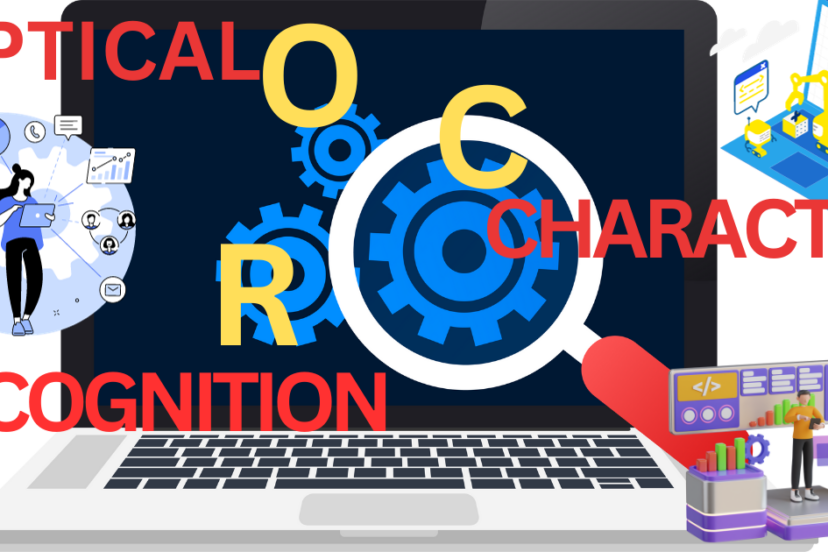Why AI-Powered OCR Software Is Essential for Modern Businesses
In a data-driven world, information is reliable. Firms must maximize the value of their data in the digital age. Consider how easy it would be to organize, search, and act on heaps of paper documents, handwritten notes, and scanned files. This is where AI-powered OCR software comes into its own.
To keep up with today’s fast-paced corporate environment, end manual data entry and make faster decisions. This paper will prove why AI-powered OCR is a game changer for modern businesses.
Prepare to go on a voyage into AI-powered OCR. We will discover how technology and innovation redefine how businesses manage data and pave the way for unstoppable success. Ready? Let’s get started!
What is OCR Technology
Before we delve into AI-powered OCR let us understand what it means. Optical Character Recognition (OCR) is a technology that converts various types of documents, such as scanned paper documents, PDF files, or images captured by a digital camera, into editable and searchable data. OCR technology has been around for decades, but it has significantly evolved with the integration of Artificial Intelligence (AI).
Traditionally, OCR software struggled with accuracy, especially when dealing with handwritten or poorly printed text. However, AI-powered OCR algorithms have vastly improved accuracy rates by recognizing patterns, context, and even individual handwriting styles. This technological leap has transformed OCR from a basic tool into a powerful business asset.
The Advantages of AI-Powered OCR
Improved Accuracy and Efficiency
One of the primary advantages of AI-powered OCR is its remarkable accuracy. These systems can recognize and interpret text with a level of precision that was previously unattainable. This improved accuracy increases efficiency, as fewer errors mean less time spent on manual corrections.
Handling Various Document Formats
AI-powered OCR is not limited to standard fonts and printed text. It can handle a wide range of document formats, including handwritten notes, cursive writing, and even multiple languages. This versatility makes it indispensable for businesses dealing with diverse document types.
Language and Handwriting Recognition
AI-powered OCR excels in recognizing different languages and even understanding the nuances of handwriting styles. This capability opens doors for businesses dealing with multilingual documents or customer correspondence.
Scalability and Automation
Modern businesses deal with massive volumes of data. AI-powered OCR solutions can scale effortlessly to handle increased workloads. They also offer automation features that can streamline document processing, reducing manual labor and human error.
Use Cases in Modern Businesses
The applications of AI-powered OCR in modern businesses are extensive and transformative. Here are some critical use cases:
Document Digitization and Archiving
Businesses can digitize and archive historical documents, making them easily accessible for future reference. This not only saves physical storage space but also ensures that valuable information is always preserved.
Data Extraction and Analysis
AI-OCR can extract data from invoices, receipts, and forms, allowing for rapid data entry and analysis. This capability is invaluable for finance departments, helping them make informed decisions quickly.
Enhancing Customer Experiences
AI-powered OCR can be used to automate customer interactions. For example, it can scan and process customer inquiries, speeding up response times and improving overall customer satisfaction.
Compliance and Security Benefits
AI-OCR can assist in maintaining compliance with regulatory requirements by accurately processing and storing sensitive data. Additionally, it enhances security by reducing the risk of data breaches associated with manual data entry.
Choosing the Right AI-Powered OCR Solution
Selecting the right AI-powered OCR software is crucial for realizing these benefits. When choosing a solution, consider factors such as accuracy, scalability, integration capabilities, and vendor support. Some of the top AI-powered OCR software providers in the market include ABBYY, Google Cloud Vision, and Microsoft Azure Cognitive Services.
Implementing AI-OCR in Your Business
Implementing AI-OCR may seem daunting, but it can be a smooth process with the right approach. Here are the steps to integrate AI-OCR into your existing workflows:
- Assessment: Identify your business’s specific needs and document types that would benefit from AI-OCR.
- Software Selection: Choose an AI-OCR solution that meets your requirements and budget.
- Integration: Integrate the chosen solution into your existing systems and workflows. This may require some customization.
- Training: Train the AI models to recognize your organization’s unique document formats and handwriting styles.
- Testing and Optimization: Continuously test and optimize the system for maximum accuracy and efficiency.
- User Training: Ensure employees are trained to use the AI-OCR system effectively.
Despite its numerous advantages, implementing AI-OCR may have challenges such as data security concerns and resistance to change. However, the benefits far outweigh the initial hurdles.
Cost and ROI Analysis
Businesses may be concerned about the initial investment required for AI-OCR implementation. Still, it’s essential to consider the long-term return on investment. The time and labor saved by automating document processing can result in significant cost savings over time. Additionally, the improved accuracy of AI-powered OCR can prevent costly errors.
Addressing Concerns and Misconceptions
As with any new technology, AI-powered OCR software has fears and misconceptions. These come from technology errors or misunderstandings. This section clarifies some common questions and misconceptions.
Data Security and Privacy Concerns
- Concern: Many worry that using AI-powered OCR could compromise data security and privacy, especially when dealing with sensitive documents.
- Clarification: Reputable AI-powered OCR solutions prioritize data security. They often offer encryption, access controls, and compliance with industry standards like GDPR and HIPAA. It’s crucial to choose a trusted provider and implement robust security measures to protect your data fully.
Replacing Human Workers
- Concern: Some fear AI-powered OCR will replace human workers, leading to job loss.
- Clarification: AI-powered OCR is a tool designed to enhance human capabilities, not replace them. While it can automate repetitive tasks, it requires human oversight for quality control and decision-making. Businesses often use it to free up employees’ time for more valuable, strategic work.
Loss of Quality and Accuracy
- Concern: There needs to be more consensus that automating processes with AI could lead to a decline in quality and accuracy.
- Clarification: AI-powered OCR is known for its exceptional accuracy and efficiency. It reduces the risk of human errors, resulting in improved data quality. However, it’s essential to implement proper training and testing to ensure optimal performance.
Complex Implementation
- Concern: Businesses may hesitate to adopt AI-powered OCR due to perceived complexity in implementation.
- Clarification: While implementation may require effort, it’s a manageable process. Most providers offer support and training to help businesses integrate AI-OCR into their workflows smoothly. The benefits outweigh the initial challenges.
High Costs
- Concern: Some businesses assume that implementing AI-powered OCR is cost-prohibitive.
- Clarification: While there may be initial costs associated with AI-OCR implementation, it’s crucial to consider the long-term benefits. Reduced labor costs, fewer errors, and improved efficiency often lead to a significant return on investment over time.
Lack of Transparency
- Concern: Users may be concerned about the lack of transparency in AI-powered systems and how they make decisions.
- Clarification: Responsible AI-OCR providers are increasingly focused on transparency. They are working to provide explanations of AI decisions and ensure that users understand how the technology works. Transparency is a growing priority in the AI community.
Conclusion
Imagine a world where piles of paper are gone and handwritten notes are easy to read. Where data entry errors are almost non-existent, and client interactions are quicker and more personalized. That world is within reach with AI-powered OCR.
So, as you contemplate the future of your business, consider this: AI-powered OCR is not just a tool; it’s a transformation. It bridges a more efficient, customer-centric, and competitive future. The choice can make your business thrive in the digital age.
Don’t wait on the sidelines while others embrace this technology. Take the leap, explore the possibilities, and watch your business soar. Embrace AI-powered OCR, and let your business lead the way into a brighter, more efficient tomorrow. Your journey to success starts here.




